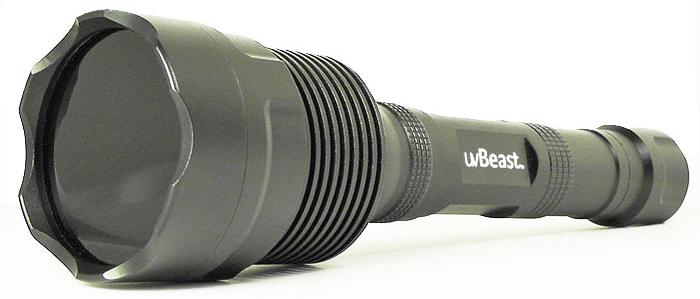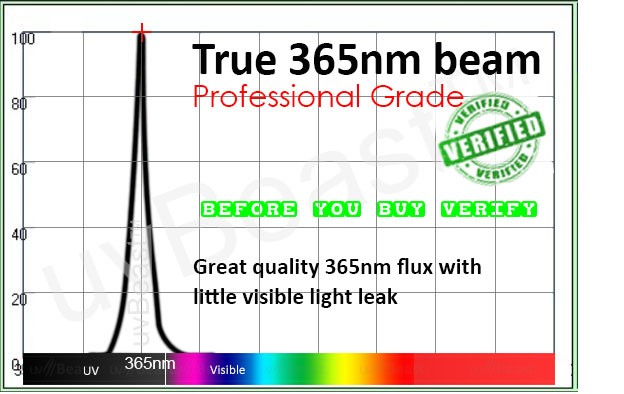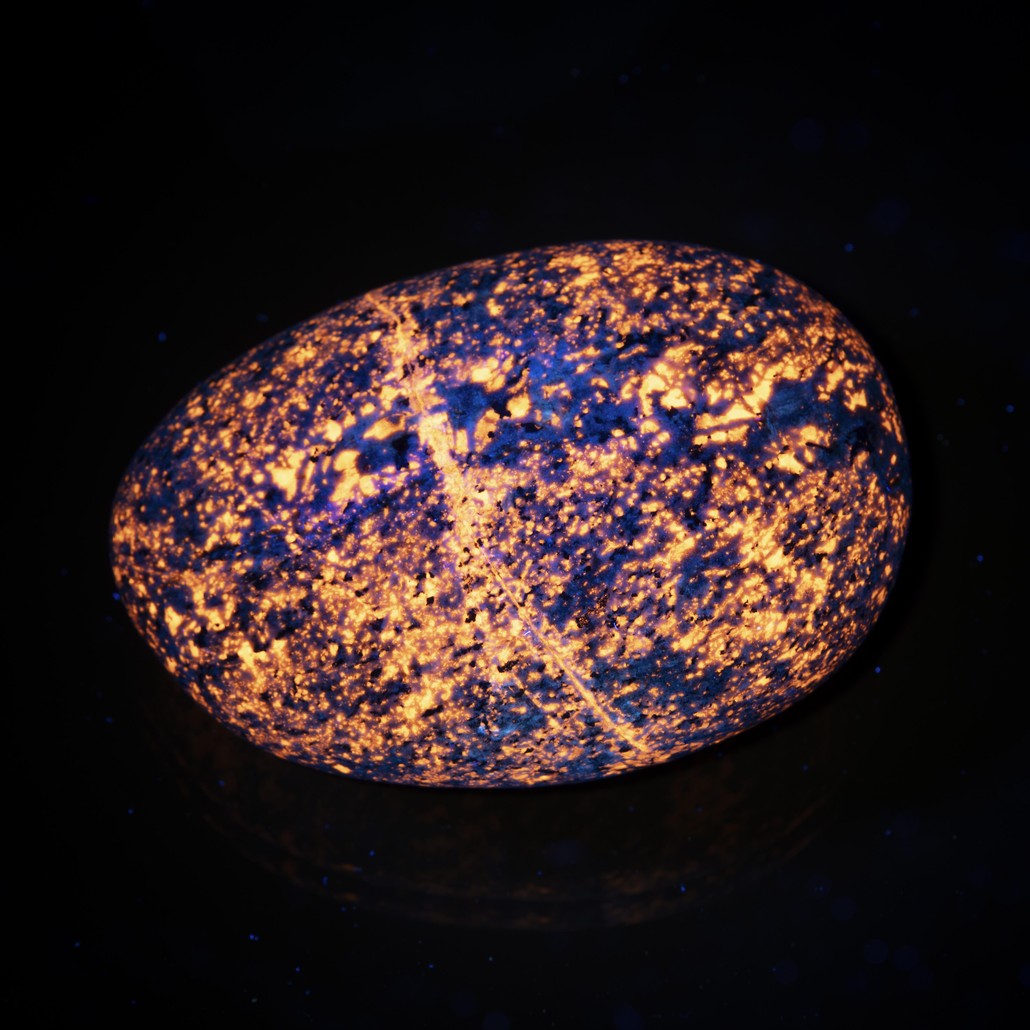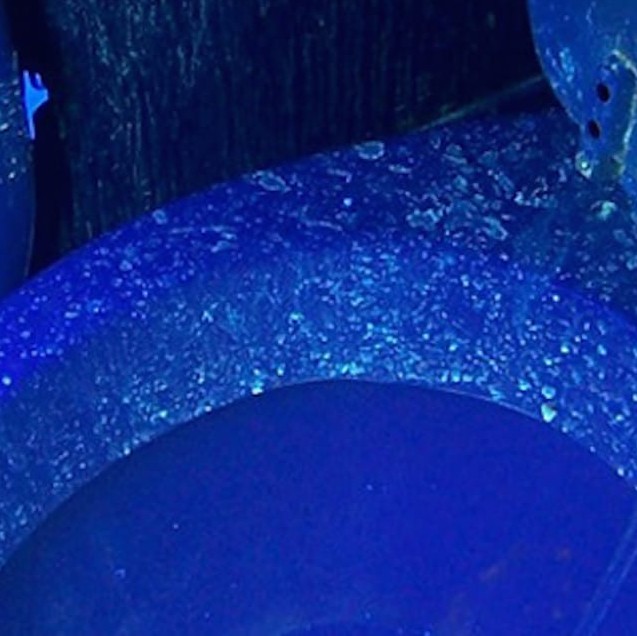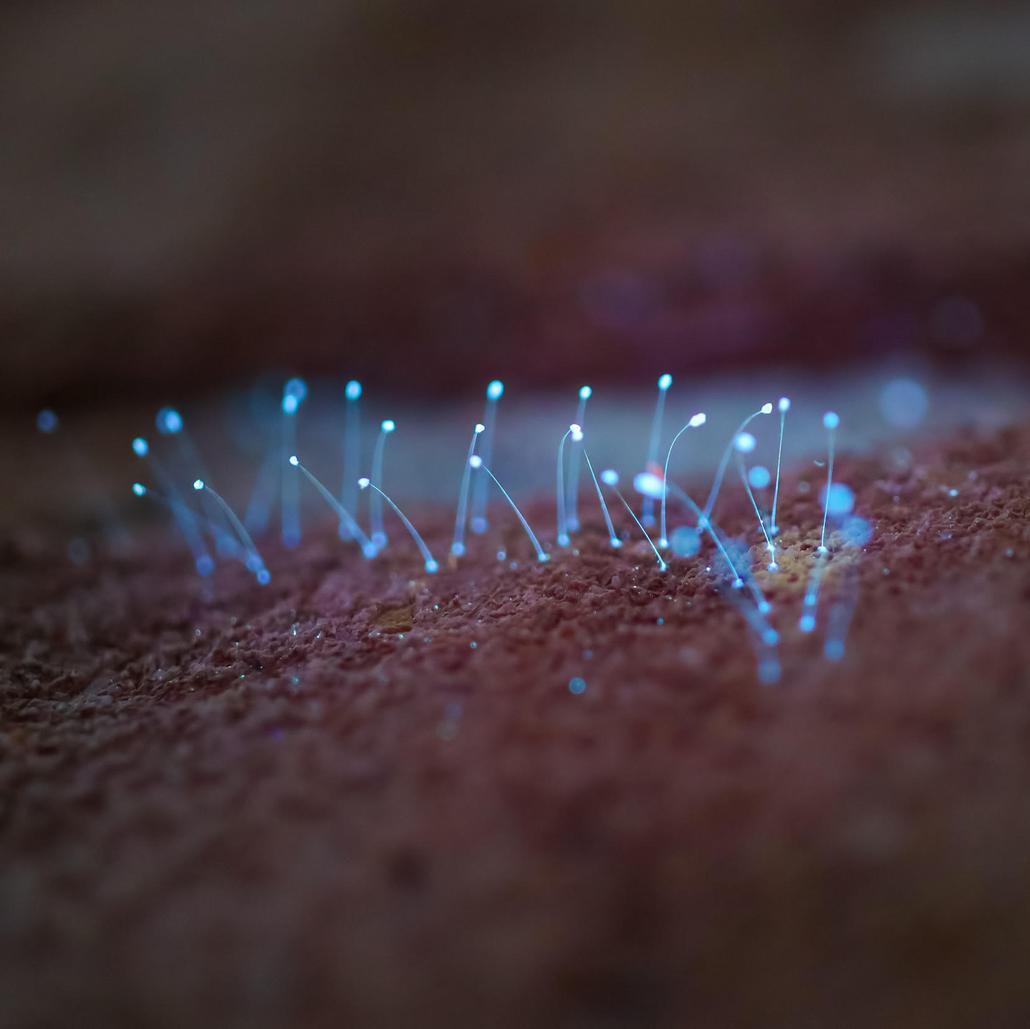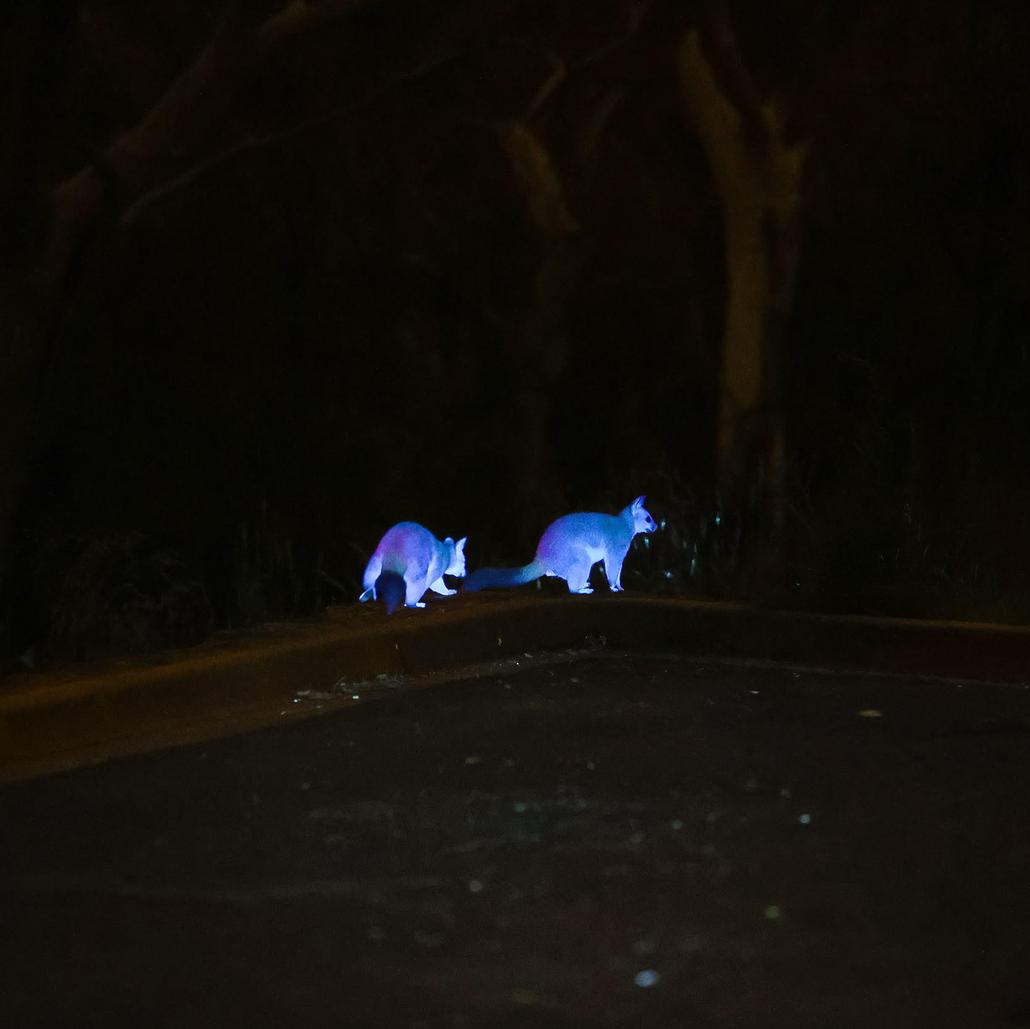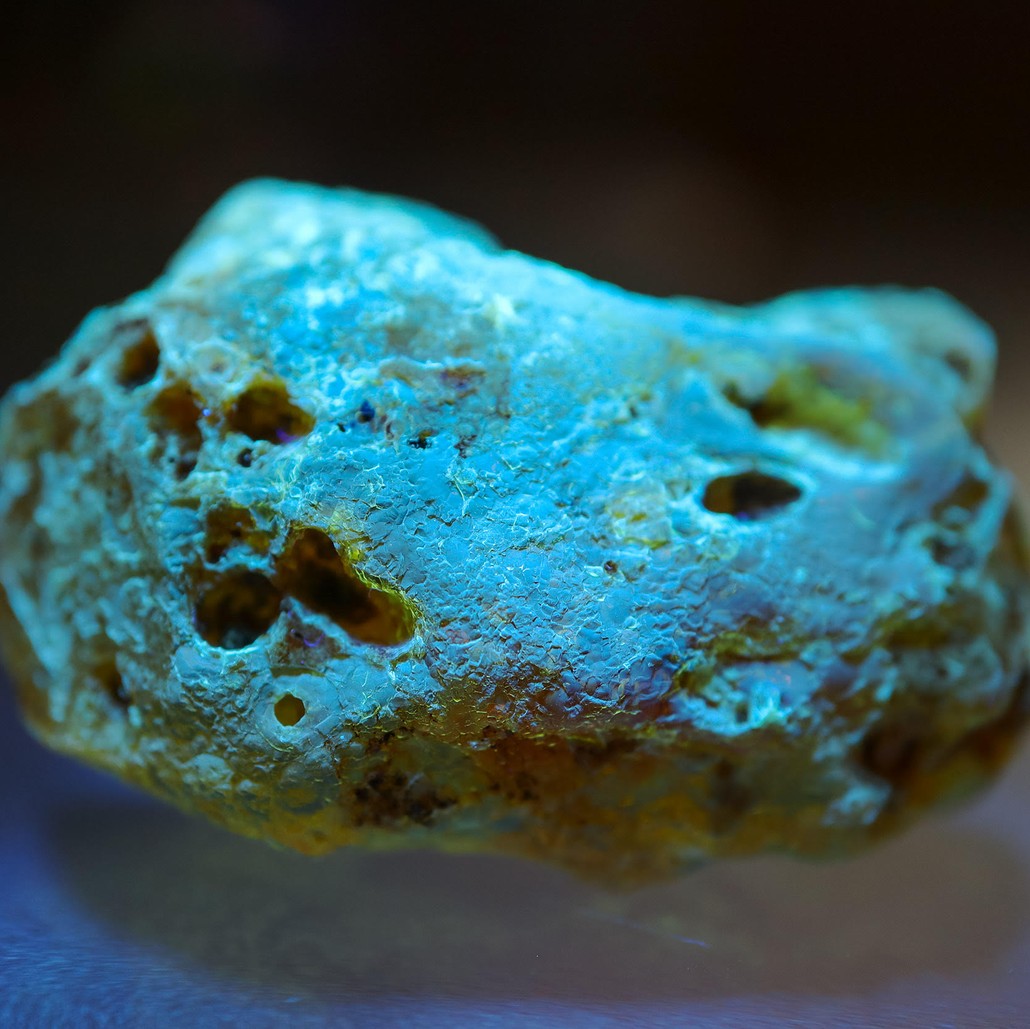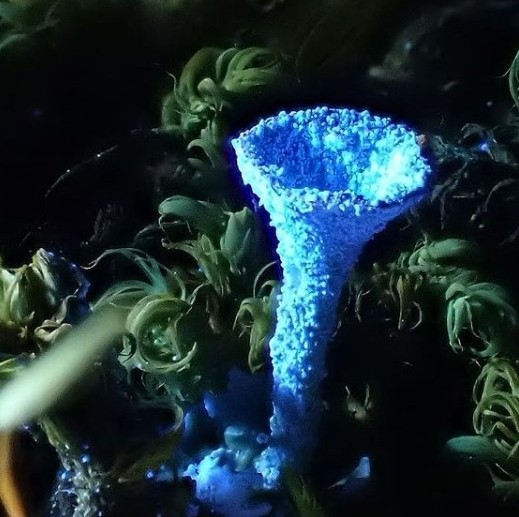"High power UV is our speciality". Ships from the USA. Fast and free. LIMITED STOCKS
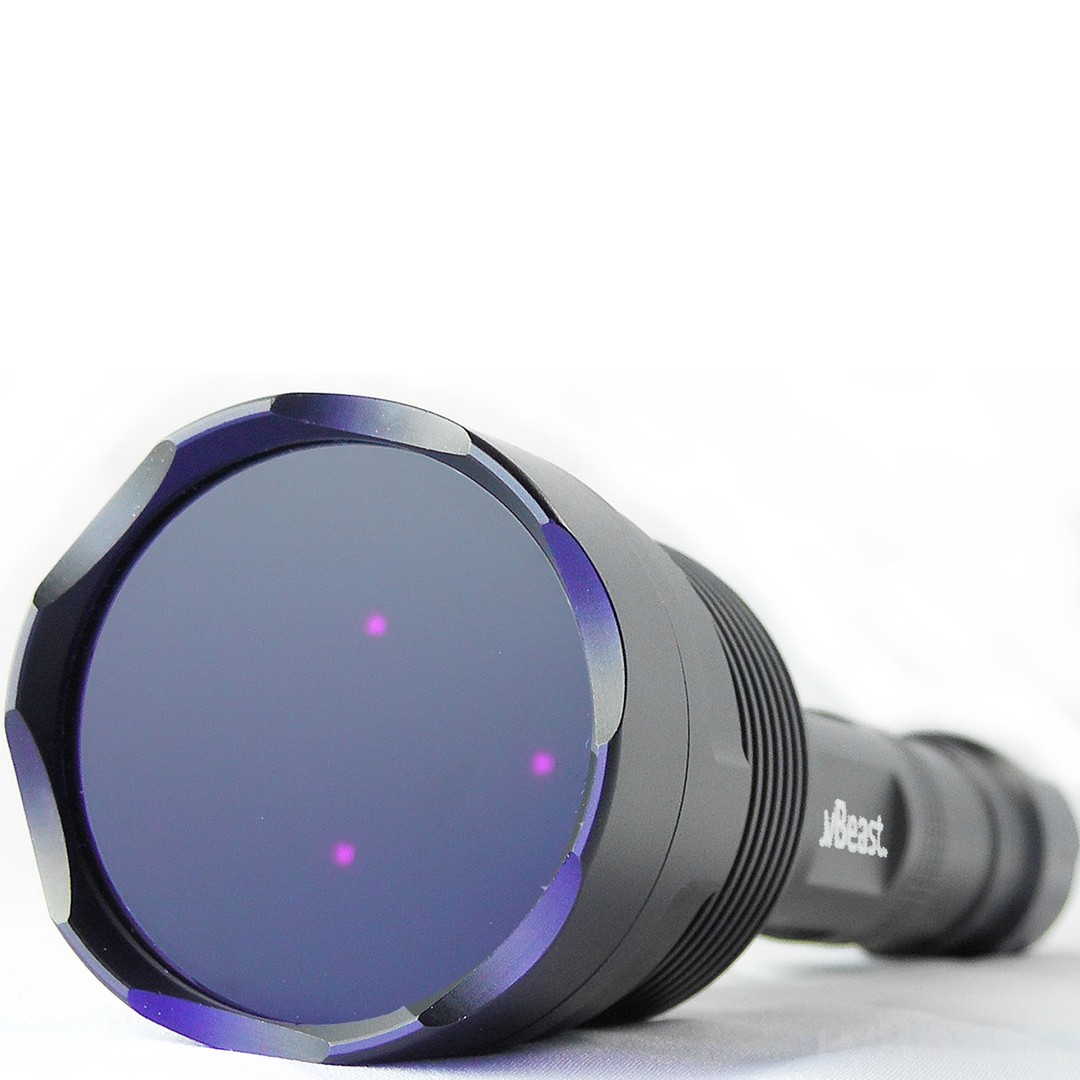
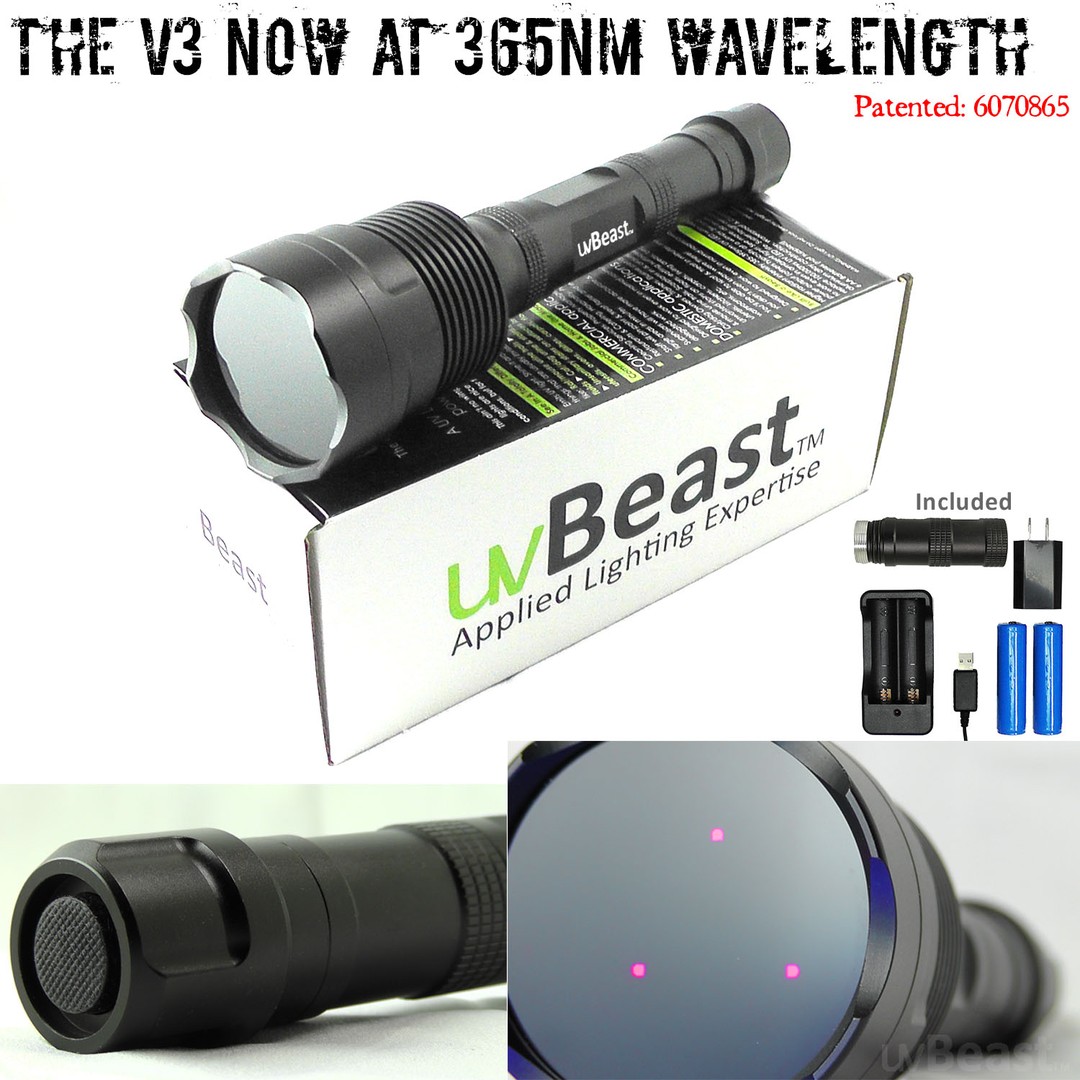

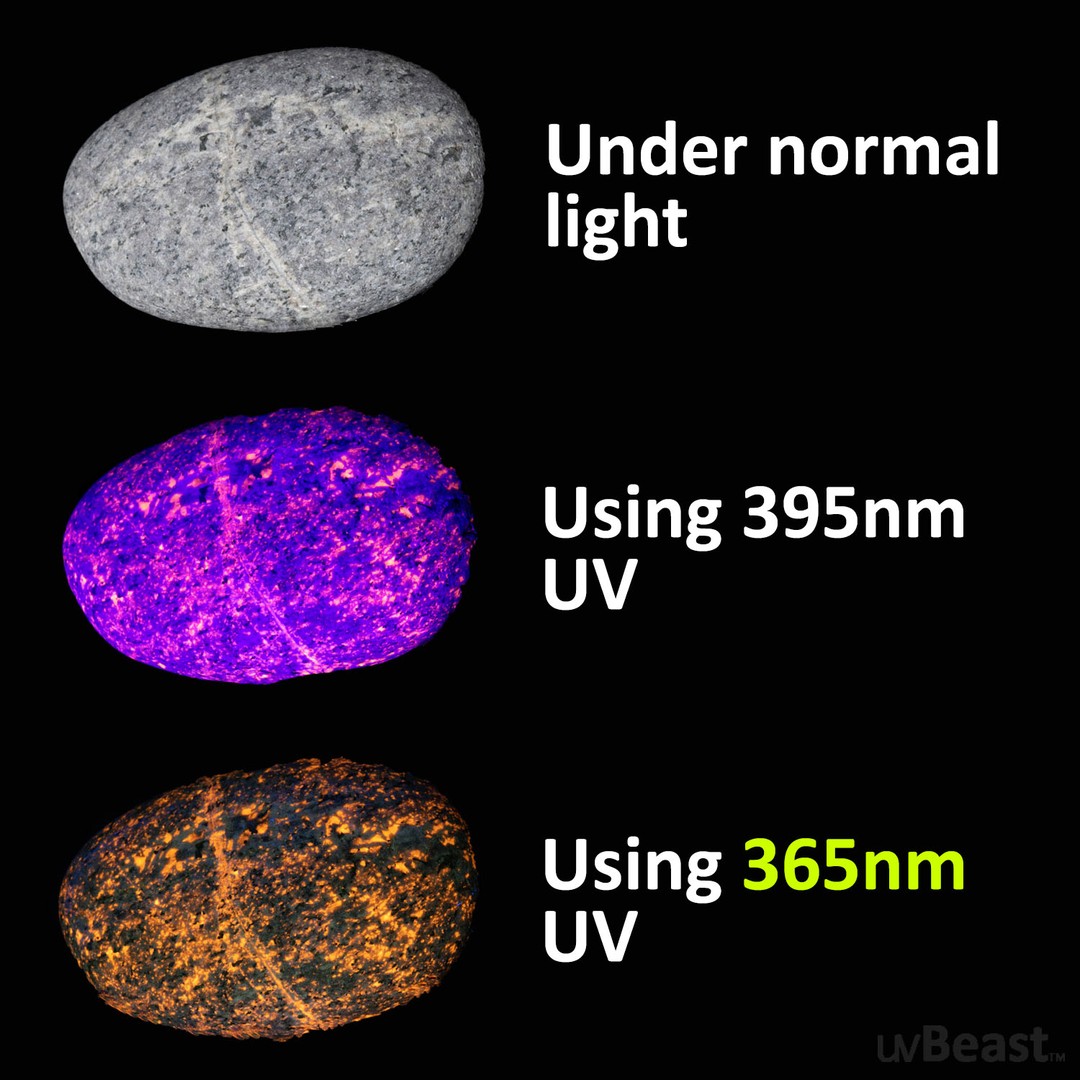
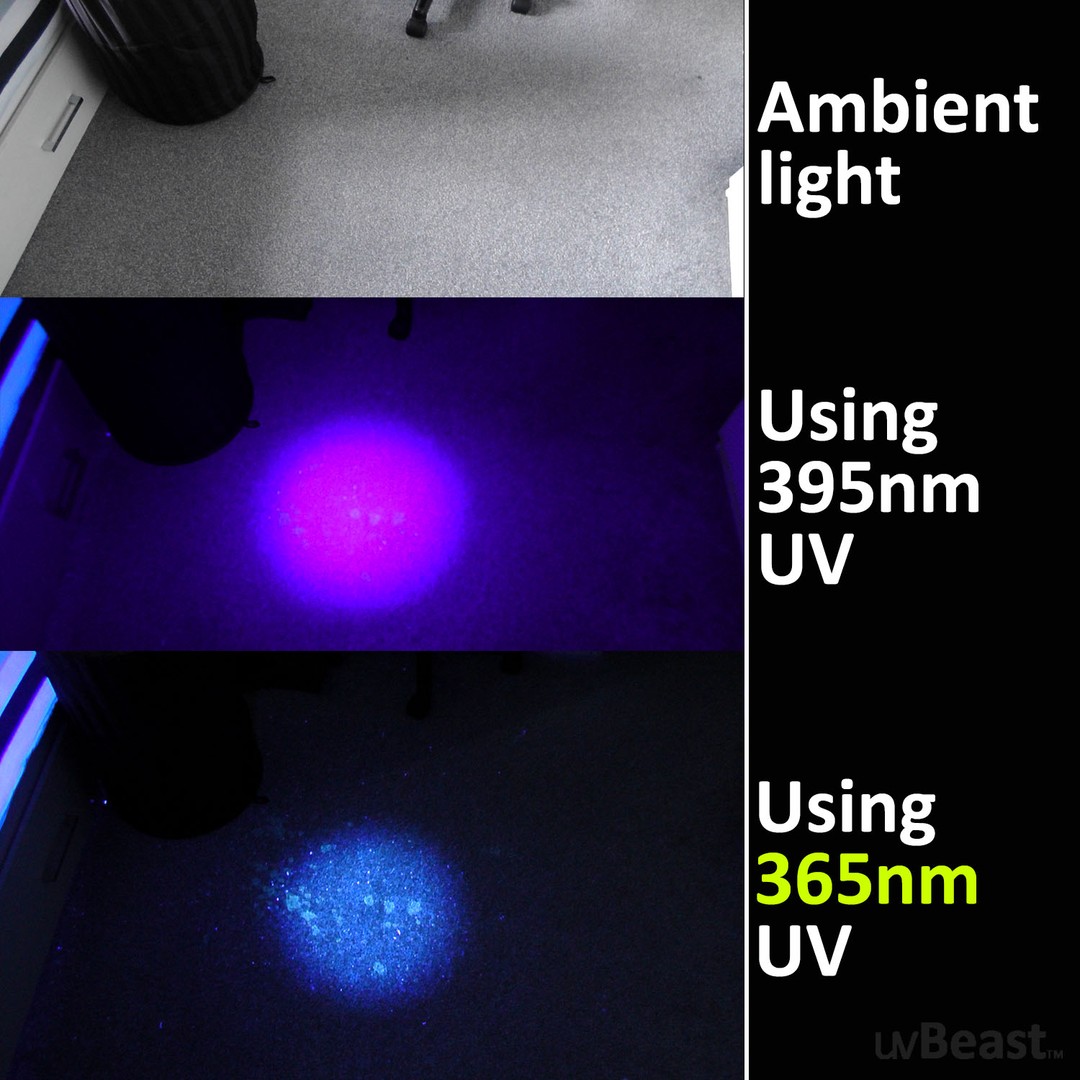
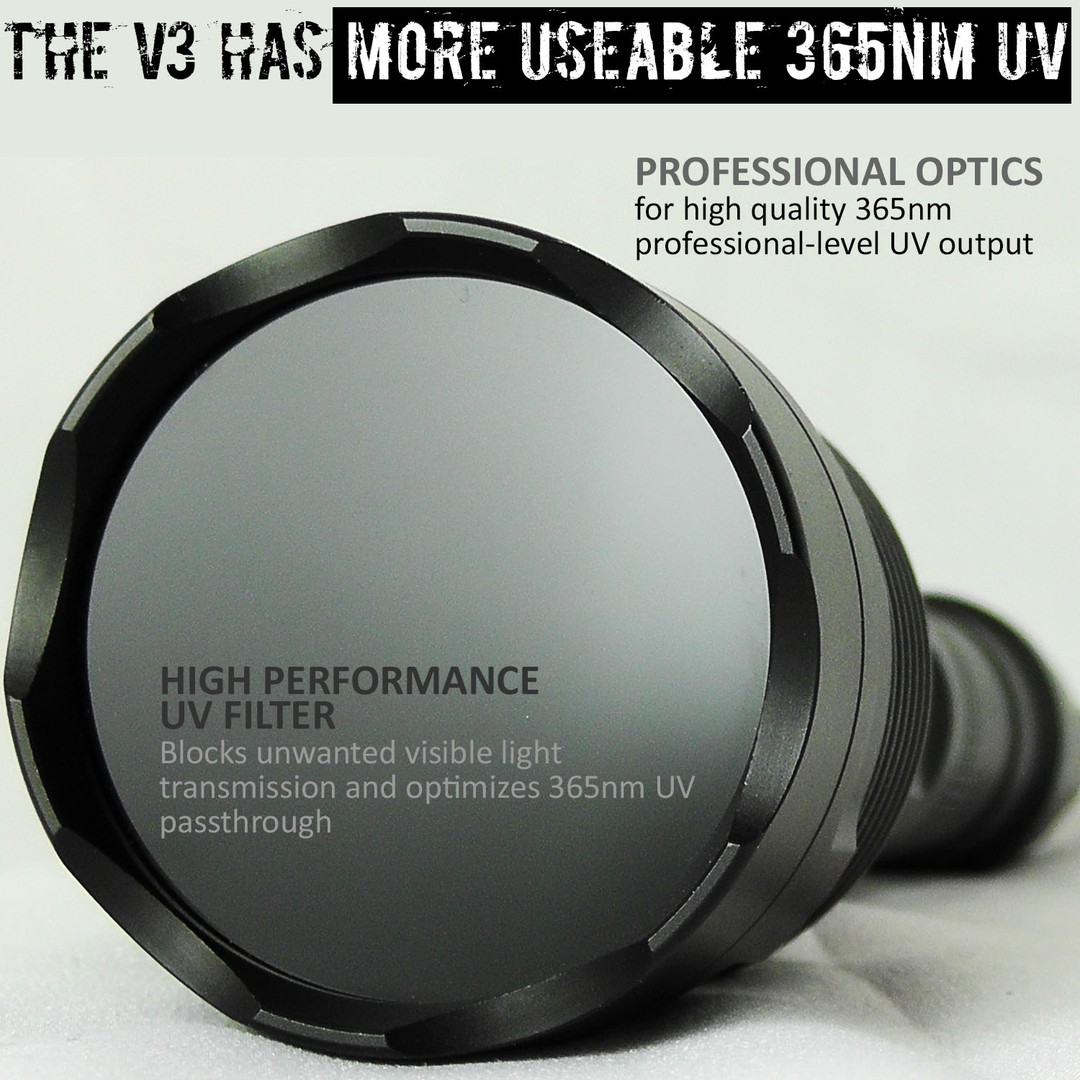
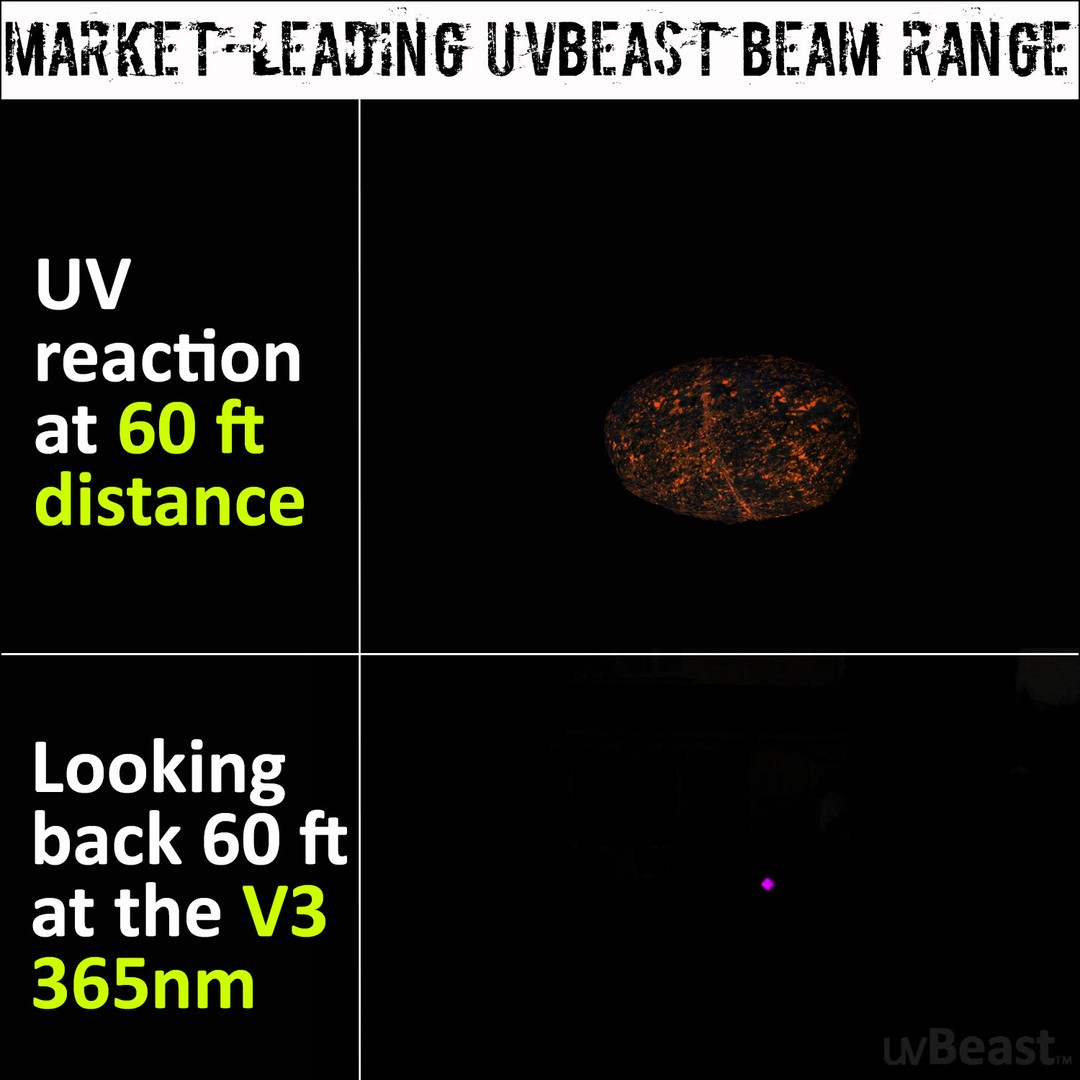
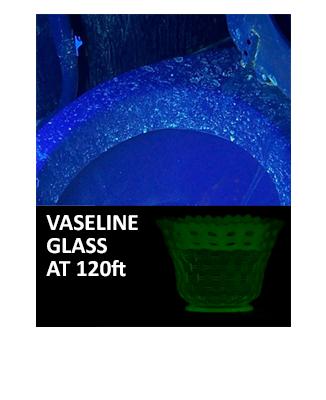

uvBeast V3 365nm Filtered - Black Light UV Flashlight - Long Range
BEST 365nm UV THROW
BEST 365nm UV THROW
"I don't want to ever use my other UV flashlights" - Dameon Z.
V3 365nm Black Light UV Flashlight – FILTERED Ultraviolet - Rechargeable 18650 – HIGH POWER and LONG RANGE Professional Grade Beam Best for Professional/Commercial Use – USA Stock
Editor's recommendation: "If you’re a user of 365nm flashlights – which is the flashlight gold standard UV wavelength – then you’ll know that most are pocket sized and can leave you wanting more! Well, problem solved. The V3 365nm has the power upgrade that a 365nm flashlight so badly needs. It has three big SMD 365nm LEDs with filtered UV, so NO pesky visible light which spoils most 365nm flashlights. It really does make a huge difference! Don’t just take our word for it. Do some research or ask anyone in the know. The V3 365nm is a very wise investment for those who are serious about wanting UV purity at 365nm for stunning results. Bravo!"
100% Money Back Guarantee
"I don't want to ever use my other UV flashlights" - Dameon Z.
V3 365nm Black Light UV Flashlight – FILTERED Ultraviolet - Rechargeable 18650 – HIGH POWER and LONG RANGE Professional Grade Beam Best for Professional/Commercial Use – USA Stock
Editor's recommendation: "If you’re a user of 365nm flashlights – which is the flashlight gold standard UV wavelength – then you’ll know that most are pocket sized and can leave you wanting more! Well, problem solved. The V3 365nm has the power upgrade that a 365nm flashlight so badly needs. It has three big SMD 365nm LEDs with filtered UV, so NO pesky visible light which spoils most 365nm flashlights. It really does make a huge difference! Don’t just take our word for it. Do some research or ask anyone in the know. The V3 365nm is a very wise investment for those who are serious about wanting UV purity at 365nm for stunning results. Bravo!"
What are people saying about the V3 365nm?
★ ★ ★ ★ ★
“IT'S A UV FLAMETHROWER. I've seen professional UV lights like this priced for three times as much, yet here it is. 365nm is still UVA (aka "longwave"), but it is deeper than party lights, which are typically around 400nm. And while there are more and more 365nm LED UV torches on the market, the best have the dark dichroic filter to cut down extraneous blue light and provide excellent contrast. The uvBeast sports a hefty, metal "host" to help with heat dissipation and provide a longer duty cycle. A body extension is also included so that three power cells can be used, instead of just two. This increases run time and turns the uvBeast into a Mag-lite-like baton. The three LEDs are smartly focused for a good, long throw. Pump up those UV mineral specimens, uranium glass, or just gross yourself out with how dirty your house is even after a complete hose-down.”
—Metryq, USA
★ ★ ★ ★ ★
“I KNOW YOU SHOULDN'T FALL IN LOVE WITH MATERIAL THINGS. BUT I LOVE THIS DAMN UV FLASHLIGHT!!!!!!!! I thought I knew what a uv flashlight was all about....and then I turned on UVBEAST 365nm flashlight in the bathroom......OMFG!!!!!!!!!! THEY ARE THE KINGS OF THE UV FLASHLIGHT WORLD!!!!!!!!! I WAS ABOUT TO BUY ANOTHER ONE.....AND WITH GREAT DISAPPOINTMENT I SEE THEY AREN'T IN STOCK!!!!!!! BRING IT BACK!!!!!!!! BRING IT BACK!!!!!!!! I need another ONE!!!!!!!!!!!!!”
—Lamarr Miles, USA
★ ★ ★ ★ ★
"Everyone should love their children as much as these folks love UV flashlights. I live in NY and bought them for fun and photography - with neon / fluo colors . The attached are direct from my Samsung Note 10 plus - no edit. These guys are serious about their lights. I've collected knives and tactical lights like every other car and motorcycle collector ;) This is military grade , great machining & finish - and perfect customer outreach. Just enough to get someone like me who rarely writes reviews to do so - but not enough to worry about unsubscribing ;) 5 Stars”
—A. Wilzig, USA
★ ★ ★ ★ ★
“Aptly named ‘uvbeast’ for good reason. Structurally built like a police-level Maglite, it will easily perform whatever UV tasks you throw it’s way. I purchased it specifically for artwork examinations and it does exactly what I need it to do. If you’re looking specifically for a 365 nanometer beast...this is your baby.”
—JayCee, USA
★ ★ ★ ★ ★
"So I’ve the V3 365nm for over a month now. My neighbor had an oil leak on his truck. I thought this would be a nice test for my UV light. My cheap (local hardware store) UV flashlights were useless when trying to find the UV leak. We had to be in complete darkness for the cheap light to work. V2 flooded the entire bottom of the truck, we found the leak right away! V3 made the leak glow intensely in broad daylight. This definitely a nice addition to my collection. I’d give this UV light ten stars if I could, thank you.”
—Tony A., USA
★ ★ ★ ★ ★
“Quality light and construction. Fantastic quality and UV intensity. Unit comes with add-on extension tube for a 3rd battery plus spare O-Rings. Excellent value!.”
—R. Lazik, USA
★ ★ ★ ★ ★
"Purchased this to track down cat urine and it is incredible!! We had another black light that was OK but, this one shows EVERYTHING!! It's almost scary the stuff you will see with this light...Some of our walls looked like a murder scene. All in all, great light for tracking down those invisible pet stains.”
—Jim696, USA
★ ★ ★ ★ ★
“I saw that uvBeast was coming out with a new V3 in 365nm and had to give it a try. I already have their uvMini version and was extremely impressed by the output of the 365nm vs my other 395nm lights. The V3 is a very heavy duty light, built like a tank that could take a lot of punishment. It came with two 18650 batteries, charger, and extension for adding a third battery if you wish and the light itself. It was really nice that they include batteries and the charger. I already have plenty of the 18650s around and decided to add the extension to extend the battery life while testing this bad boy out. As far as UV output, I was completely floored by how much 365nm UV this puts out, just amazing and it blows all my current lights completely out of the water. Nothing I currently own even comes close to putting out this much true 365nm UV. I went around the house initially couldn’t believe all the stuff on the carpet that the 395nm lights don’t even show. There is a lens on the light that also blocks any stray non UV light so you are really getting as much 365nm UV output as you can get. Don’t expect to have a bright blue light like you see with the 395nm lights, it’s just not there and almost looks dim until you hit something that does react to the UV and then it’s ”WOW” time. If you are looking for an excellent 365nm UV light then definitely look at the uvBeast V3 365 it’s well worth the money..”
—Chili_red, USA
More UV Power at 365nm Wavelength
PRO-GRADE 365nm UV
365nm UV is considered as the Gold Standard. Moreover, this is filtered 365nm wavelength that professionals and specialists use. We know. We supply them. This is NOT to be confused with unfiltered 365nm UV. This is UV light at its purest.
WHY uvBEAST V3?
Most 365nm UV flashlights are not intense, lack range, and lack the power you need. So, with the V3 365nm we’re giving you the next stage of progress. It’s the upgrade to 365nm flashlights they so desperately need. More intensity, more range, more useful!
HIGHEST INTENSITY
It's our highest intensity UV at 365nm wavelength. It has triple LEDs (manufactured in South Korea) at 1000 mA each emitting 1800 uW/cm2 of UV radiant intensity. That’s a whopping total of 5400 uW/cm2 of UV intensity at 365nm. That’s higher than most 365nm devices currently on the market.
SOLID CONSTRUCTION
We didn't skimp on the build. Aerospace grade anodized aluminum build throughout. Tough and light. This won't corrode nor rust. It'll give you years of faithful service!
LONG RANGE
Unlike others this is long range 365nm UV. A high intensity 365nm device which can emit a beam out to 60 feet plus is hard to find. We know, because our users have told us. We’ve filled this gap with the V3 365nm to change the game for those who want results at long range with UV 365nm purity.
-
INCLUDED x2 Lithium-ion 18650, 3.7v 2600mAh; Protected (PCB)
-
INCLUDED 2-bay 18650 USB Battery Charger
-
INCLUDED US mains adapter (for fast mains supply charging)
-
Finish: Anodized Black
-
Material: Aerospace Grade Aluminum
-
Special Features: FILTERED 365nm UV high radiant intensity; Long range beam
-
Average working time: 2-3 hours on a single charge
-
Average Battery Life: 750-1000 charge cycles
The Problem With Other 365nm UV Flashlights
The single most common complaint with 365nm UV wavelength flashlights is that they leave you underwhelmed. Their small sizes don’t produce an intense enough 365 nanometer UV beam for most of us and leave us wanting more.
We're Different.
So, with the V3 365nm we’re giving you the next stage of progress. It’s the upgrade to 365nm flashlights they so desperately need. The V3 365nm version has a UV quality in a different league! The UV type and intensity is the one that many users have wanted but weren’t faced with much choice in the market. Until now. We stepped in to fill that need
Inspired by Our Users!
Since introducing our V3 model, demand was so high that our units manufactured couldn’t keep up and we completely sold out (and often still do). The upside is that it proves what people want in a UV flashlight
What's in V3 365nm?
Our users wanted more intense 365nm UV and more range for better results. Our design intentionally aims to fill those gaps.
(1) Top-quality UV. The popular and in-demand V3 spec now emits even higher quality UV at 365nm wavelength.
(2) More bang for your buck with filtered UV. This isn’t cheaper unfiltered UV.
(3) Unbeatable long range (60 feet+) and a high intensity 365nm beam unlike others.
(4) Powered by Lithium Ion 18650 rechargeable cells (supplied with charger and adapter). Two cells with a BIG payload of 7.4 volts.
Ready For Pro-Grade 365nm UV Power?
This is filtered 365nm wavelength that professionals and specialists use. We know. We supply them. This is NOT to be confused with longer wave 395nm devices. Nor is it to be confused with unfiltered 365nm UV. Most excitation occurs at 365nm which means you’re getting superior results to most users. 395nm devices simply cannot compete with 365nm devices. The on-board UV filter blocks unwanted visible light but allows max transmission of pure 365nm UV. This is UV light at its purest.
Ready Out-of-the-Box
We know that sourcing the operating kit can be a hassle for some. So we’ve included two button-top 18650 3.7v rechargeable cells at 2600 mAh with a protection PCB (to prevent over-charging and over-discharging), and a two-bay USB charger with a mains adapter to go with it. You’re buying a convenient ready-to-operate package powered by lithium ion.
Claim to Fame?
This V3 version emits at 365 nanometers (nm). This is sought-after UV flashlight wavelength. It’s in demand and is the choice for professionals and specialists. What’s more it’s filtered 365nm UV. The results are stunning. Just what users always wanted from a capable handheld UV device. It’s high intensity produced by THREE ultraviolet 365nm LEDs, with a long range to match.
The V3 365nm has been designed for users who want more from a UV flashlight.
More intensity. More range. And high quality, pure 365nm filtered ultraviolet that satisfies the most demanding of users.
Professionals use our UV lights. If it's good enough for them, it'll be great for you.
It'll bring seismic improvements in the way you'll use UV.
Are you disappointed with or worried about inferior (UV) results? uvBeast UV flashlights are solely designed with that inferiority taken right out. Higher power UV will give you results that will astonish you.
We only do higher intensity powerful UV. Because it's the biggest single thing that will make all the difference to you.
Tell me more.
-
What UV wavelength is this?
This is filtered ultraviolet light emitted at 365nm (nanometer) wavelength. Note that visible light can start at 395nm+ which is the "violet" region - the first region in the rainbow. Below this is the "ultra" violet region which the human eye cannot see.
So, coming back to what we just said - this light emits UV at 365nm wavelength. This means that the maximum density of the flux peaks at 365nm and the filter ensures this over other UV 365nm flashlights in the market.
More excitation occurs using the 365nm wavelength, meaning that with 365nm you'll see a lot more fluorescence and things will show which don't under higher wavelength UV such 390nm.
You won't be seeing very much non-useable visible light. The V3 365nm will appear "dim" to you - some will even think it's a scam - but that's exactly what you're looking for in a "UV light". Ultraviolet light that is beyond the visible spectrum which you cannot see. You'll only be able to see the fluorescence effects, which will amaze you. The test of this is fluorescence of targets rather than the “brightness” of the light source itself. So the only way to tell is to test how vividly objects fluoresce back to you. Experiment and see.
-
Is the difference between the V3 385-395nm model and the V3 365nm ONLY the filter?
No. They are different because they emit UV at different wavelengths. The filter is not causing the difference in wavelengths, the LEDs are. The two models have different LEDs. So the real difference is in the UV wavelength, and the filter on the V3 365nm acts to accentuate the 365nm UV wavelength.
With the V3 385-395nm model, there is “no” 365nm emitted in the first place. (We say “no” but in reality there is some flux in that region but it isn’t significant relative to the majority 385-395nm wavelength). In other words, by simply fitting a filter to the 385-395nm will NOT give you the same wavelength as the V3 365m and therefore it will not give you the same results.
The difference between 365nm and the 385-395nm ultraviolet is that you’ll get different results. Not necessarily better, but different, since it depends on your usage. For forensic type work, professional stain detection, geology, cell staining, leakage detection, NDT, or in applications where you need high contrast in fluorescence, the 365nm is a sought after wavelength.
Also, bear in mind that some substances will only show up under 365nm UV, so that is also a key consideration. Artwork and antique appraisal is a good use case example. The 385-395nm wavelength is sometimes preferred for applications which need higher intensity UV where the higher wavelength will also perform. For example, miners, engineers, fishermen, fossil hunters, bone identification (human and otherwise), and scorpion hunters - to name a few user types - may prefer the longer wavelength and pound-for-pound higher relative UV intensity for longer range applications.
-
What's the difference between your 365nm and 385-395nm UV wavelength flashlights?
Some of our models emit at 385-395nm UV wavelength range, and others emit at 365nm. "nm" stands or nanometer as a measure of wavelength on the electromagnetic spectrum. 395nm+ (greater than 395nm is the visible light region, then moving into infrared).
It's not necessarily the case of which is better, but more about which one suits your needs and requirements the best. If you're new to UV a 365nm model will have you surprised as the emitted light will appear DIM to the eyes, but excitation of objects is high and so fluorescence is correspondingly high. The 385-395nm models will emit more visible light relative to the 365nm model which can sometimes be useful for navigational purposes.
Different items will show up under the different wavelengths. As a rough guide, the 385-395nm devices are more than adequate for scorpions, finding fluid leaks, fossil hunting (including bones), urine identification, various minerals, charging of photo phosphorescent substances (i.e. glow-in-the-dark items), vaseline glass, flora and fauna, and similar. Under 365nm UV you get to see all of the above (with much better contrast as there's minimal visible light interference), plus more items will show up. 365nm will fluoresce a wider variety of minerals and also in different visible colors, stains will pop out, UV security features will stand out (as they're designed for 365nm UV), curing will be better, and for those who prefer uncontaminated UV at a wavelength where the widest variety of objects will fluoresce, then 365nm is the best choice. But again, pay attention to your requirements as in many cases 385-395nm from our V1 device is perfectly adequate for many applications.
In a nutshell. The 385-395nm have relatively more visible light and are suitable for many applications including the common ones, plus more. The 365nm devices are a great at all tasks requiring UV and will go beyond into giving you more precise and great contrasting results. Many folks often prefer to have both types to hand as we've found from purchasing habits on our store.
-
What are the distinguishing features of the V3 365nm model?
When we first introduced our V1 model to the market (back in 2015), it was a new design and approach which brought formidable hand-held UV intensity at the disposal of the user. As you can imagine others tried to copy, clone, and imitate. But we don't stand still and we're not a one-trick-pony type of outfit. We don't want to imitate. That's not who we are. Instead, we want to innovate. So with our ears to the ground, listening intently to user requirements, we developed the V3 models which serve slightly different user requirements. Keeping us ahead of the game.
The key advantage with the V3 models is UV intensity, primarily resulting in allowing you to be more effective at longer ranges using the long throw of the beam. And close up it means you'll see more. High intensity also means being more effective under lighted conditions. And in the dark it's crazy effective.
(1) Possibly unlike other vendors, we are continuously upgrading all of our models as and when we identify opportunities to do so. UV user appetites seem to know no bounds. Improvements are continuous. So with a Lithium-ion rechargeable power source the V3 365nm models can support newer tech LEDs to give you even more UV power - at 365nm wavelength. That's more range and more UV intensity compared with many other 365nm flashlights.
What's more we're taking the hassle away from you having to get and also pay extra for the extra bits-n-pieces to operate a rechargeable li-ion UV flashlight. At an inclusive price - no sneaky "you also need to purchase these" at check out! Your uvBeast V3 includes the accessories you need so it’s ready-to-use straight out of the box. It includes: Two 18650 Lithium-ion 3.7 volt protected cells (2600mAh capacity each); a flashlight extension barrel to fit an optional third 18650 size cell (to extend working time); a two-port 18650 cell charger with USB lead; a mains USB plug (for mains supply power); and spare O-rings.
(2) High intensity UV at 365nm - the UV gold standard. The common gripe against UV at 365nm is low intensity. We wanted to change that with the power upgrade that a UV 365nm flashlight needs. Now you have long range 365nm UV, due to the higher intensity. This also means that ambient light won't be a show stopper for your jobs anymore. We've also addressed the other complaint with 365nm flashlights - flaky quality where they peak at just above 365nm towards 370nm. We've kept things tight at the 365nm bullseye.
(3) We think you'll be hard pushed to find a more intense 365nm UV flashlight at these prices. Along with the necessary top-notch quality of the UV beam, both of which need to be present to result in a great performing 365nm UV flashlight. Producing a high intensity UV beam isn't trivial. Yes, you'll come across many examples. But trust us, there is more to it than meets the eye. You'll not only need to confident with the intensity of the UV beam, but also the quality of the 365nm UV emitted by the LEDs.
-
Why don't the 365nm models come with glasses?
(As a background please also see article “Is UV harmful to my eyes?”)
With regards to the uvBeast V3 365nm and the V3 365nm MINI, we do not offer the UV glasses with this product. The reason is because with these particular UV flashlights they are not needed. With our other models we do provide glasses since these emit a higher wavelength of 385-395nm UV. This higher wavelength contains majority UV but since it is close to visible light (~400nm) there is visible light emission.
This visible light (pertaining to 385-395nm models) can cause eye fatigue for some users after prolonged use. So the glasses assist in preventing that. Also, another function of the glasses is to block out visible light interference when observing fluorescence where sometimes and on some target objects it can be difficult to distinguish objects which are fluorescing, and the purple visible light interference emitted from UV flashlights at 385-395nm wavelength.
So, coming back to the uvBeast 365nm UV flashlight models. This flashlight emits a lower and more pure wavelength of UV at 365nm wavelength and consequently doesn't emit anywhere as much visible light and so therefore the glasses are not needed for this particular flashlight.
In addition, UV is classified into longwave and shortwave. Longwave UV also known as UVA is not harmful to skin nor eyes. Longwave UV (UVA) is ~300nm and above, and so the V3 365nm flashlight emits longwave (UVA) UV light which is not dangerous. Shortwave UV however aka UVB and UVC, is harmful due to the shorter wavelength, and is ~300nm and below. This type of shortwave UV has the known ability to damage human DNA (cancerous), and so therefore is treated with extreme caution.
Having said that, as with any powerful flashlight - including white light flashlights - looking at the beam directly will cause discomfort and so like white light flashlights should be used responsibly.
-
Is this UV flashlight harmful?
UV from the uvBeast is not dangerous to the eye. Please refer to the FDA's 21 CFR 1040 - PERFORMANCE STANDARDS FOR LIGHT-EMITTING PRODUCTS paper.
The FDA classifies "harmful" light emitters being laser emitters, sunlamps (for tanning), UV mercury vapor lamps, and medical UV devices.
And this is scientifically correct since the dangerous types of UV are:
1. UV-B and UV-C which are below 315nm which is also known as shortwave UV in the actinic region. Sunlight does contain UV-B which is why you'll see "dangers of sun exposure articles", whilst the Earth's atmosphere filters out UV-C from the Sun - good thing as it has DNA altering characteristics which is why it is used as a germicide
2. Sunlamps that are VERY high intensity which are designed for darkening the skin via exposure for several hours.
All current uvBeast models emit UV-A (above 315nm wavelength) which is not harmful to the eyes nor skin, and moreover the intensity is not that of sunlamps. Moreover the UV emission is at a wavelength of 365nm, or 385-395nm which is well above the dangerous "315nm and below" UVC region.
However, it is not advisable to look directly at the uvBeast since it will cause discomfort similar to looking at any intense light. The UV glasses which are provided with some of our models will assist in reducing the glare effects and any discomfort that some users may experience.
-
What are the uses of this UV flashlight?
You may be surprised to know that a comprehensive answer to this question is difficult. There are the common uses most people know, the not-so-common, and even the ones we ourselves are learning about from users.
For most, deploying UV is a game changer. And it gets EVEN better with 365nm UV! The key advantage with the V3 models is UV intensity primarily resulting in allowing you to be more effective at longer ranges using the long throw of the beam. And close up it means you'll see more. High intensity also means being more effective under lighted conditions.
Here's a list for quick reference.
Whether your needs are commercial or domestic uvBeast will not disappoint. Among other applications that require UV light, uvBeast is especially designed (but not limited to) to fluoresce the following:
-
Cat/Dog urine (Note: urine needs to be dry - as wet/fresh urine doesn’t fluoresce under UV, but a wet urine stain is easily spotted by the eye anyhow)
-
Scorpions and their dens (but the very young, and adults just molted may not glow as much)
-
Rat/Mouse urine trails (appear as small dots since they urinate and defecate as they travel and eat – weird I know, glad humans aren't like that. But then again..)
-
Human Body Fluids (urine, semen – sorry but had to include for completeness)
-
Unsanitary stains, and the like
-
UV Curing. For applications that require 365nm wavelength
-
Leak detection. Using UV dyes, leaks can be detected know matter how small in just about any machine in use known to man (e.g. AC units, vehicles, aircraft engines, oil rigs
-
Conformity detection. Examples include paint applications, glue coatings, correct coatings against substrates
-
Artwork and antique inspection, including uranium glass, glow paint
-
Property hygiene appraisal, houses, rental properties, hotels
-
UV photography
-
UV paint charging and fluorescence. Charging of fishing lures, charging of golf discs
-
Food quality inspection. Fruits, fish, coffee beans
-
Gemstone identification. Rubies, diamonds, sodalite, amber, and many others
-
Caterpillar identification (including the Tomato Hornworm crop destroyer)
-
Resin detection (like glue, wall paint, etc.)
-
Fossil detection
-
Ringworm and mold detection (not all species of mold)
-
Narcotic detection
-
Security markings
-
ID and paper currency verification
-
Wood (yes wood!) identification and verification
..and in fact the list goes on (if that wasn't enough).
If you have any other (quirky) uses let us know and we'll include it!
-
-
Is this a flood or spot beam?
The V1 and V2 models are characterized or can be described as having a flood-like beam, while the V3 models have a more focussed spot beam. Both have different beam properties in terms of how far the UV beam travels, versus how wide the UV beam spreads. So pick the beam shape which most suits your application or variety of applications.
All uvBeast models are designated as high intensity UV designed to blow your socks off, so you really won't go wrong with any model. But if you're preference is particular or more specific then you have options and choices.
The V1 and V2 will spread the UV beam over a relatively short distance from where you're standing, which means you get good coverage at close ranges. For example, the V1 and V2 models will cover a large area in a dark room or similar environment. The V3 models although having a higher intensity of UV, will also be effective in say a dark room, but slightly less so - the beam coverage will not be as wide. However, since a scanning motion is used with UV lights, the difference may not be so noticeable.
The V3 models however have the capability of throwing higher intensity UV out into the distance, which is perhaps what you might require for your application.
IMPORTANT NOTE (for understanding UV beam width):
When you first use a uvBeast UV flashlight and try to "see" how wide the UV beam is, it can be misleading. The beam point you'll be looking at will be the visible portion of the beam only, and may appear "narrower" than it actually is. The way to verify this (we've done it so many times) is to observe items that glow (fluoresce) well outside of the visible width of the beam. This means that invisible UV is reaching the item that is fluorescing.
Another attribute to be aware of with UV is the background color and material you're shining the beam on. If it's a dark wall you'll again, as described above, only see the visible portion of the beam. On a dark wall it will appear narrower than it actually is. Shine the UV on a white or near white wall and all of a sudden you'll see a wider spot! Again to test the invisible UV portion of the beam spot, look for fluorescence outside of the visible spot you can see with your eyes.
The above is just an example of how UV can be and will be counter intuitive at first. But you'll quickly traverse the learning curve the more you experiment and try it out.
-
How many watts is this? And is there a lumens rating like regular flashlights?
This is a good question because it's often asked. But there are differences which apply to LEDs and UV lights in particular. And this is important to note for UV users.
In summary, watts is not a meaningful measure for the intensity of LEDs (you can read below as to why). Lumens and LUX are not measures we use in the UV LED industry because these only apply to visible light LEDs. Instead in the UV industry we use radiant intensity and irradiance to measure how intense and how powerful a UV light source is. The below is a more detailed explanation for those interested. Otherwise jump to the end of this FAQ to read off the specifications.
"Watts" as a measure of brightness for LEDs is not a meaningful measure of brightness in the LED industry because wattage is talking about the energy it takes to produce a certain amount of light. This worked well with filament and incandescent lamps where the higher the wattage the brighter the light. The trouble is that the lighting industry has advanced such that wattage values are not directly translated into brightness - it's possible to have a lower wattage LED and yet it is a brighter light relative to another light source or LED with a higher wattage. Moreover, depending on the electronics and the efficiency of the LEDs, the energy (watts) supplied is NOT directly translated into light at 100% efficiency. Much if not most of that energy (wattage) is lost through heat whereby very little is actually translated into light. You could have a very high wattage LED, but most of that energy will not be directly translated into the useable light that you're after. So the LED industry has moved away from using wattage as a standard for brightness. So wattage doesn't really speak to how bright an LED light is.
So the LED industry mainly use terms such as Lumens, LUX, and Candela. Lumens is the measure of how intense the resultant or actual emitted light is and is measured in lumens. The higher the lumens the more intense the light emitted. LUX or luminous flux is the measure of light falling within a given unit of area. This is a measure of the density of the light emitted and how it's dispersed or spread. For instance you can have a very high Lumens rating but a low LUX rating depending on how the beam is emitted. It's the difference between a 500 watt light bulb and a small 50 lumen flashlight. Which one is brighter? The 500w light bulb because it can light an entire room. Which one is more powerful over a given area? The 50lm flashlight because it channels it's light into a particular viewing area. See the relevance of terminology here to give a more meaningful understanding? (We won't go into candela, steradians, and the solid angle measure, nor the inverse square law of light, as it's a bit of an overkill for this).
Now here comes the twist with ultraviolet light (or radiation to be more exact). Note: Don't freak out with that word radiation, because it is just describing the energy along the electromagnetic spectrum where visible light is also a type of radiation along with radio waves.
Lumens and LUX measurements only pertain to visible light. So this suits the regular flashlight industry and their users can happily converse with one another all day long. But UV is light which does not fall into the visible spectrum. So the UV industry to describe the attributes of their light sources cannot use terms such as lumens or LUX. This is only used as a measure of the light observed.
In the UV industry we use radiant intensity and irradiance to measure the same thing (Lumens and LUX respectively).
Radiant intensity is the measure of ultraviolet radiation actually emitted or output. Which is what you want or should know. It's the useable UV light you're going to use - remember wattage in a UV light is NOT meaningful as it attempts to describe the watts going in to power an LED semi-conductor. But that energy is mostly lost to heat, internal resistance, etc. And this can vary widely with systems being 80% efficient to 20% efficient. The input watts will mask this rather badly.
What's important to look out for is the energy that comes out of the business end - the actual radiation emitted. That's what actually and really counts. So radiant intensity of a UV flashlight is the actual UV energy emitted and is measured in watts or more typically milli and micro watts. This tells you the true intensity of UV being emitted.
Irradiance is like LUX but for ultraviolet light. Irradiance is the amount of ultraviolet falling on a given unit area and is measured in watts per square meter, or more typically milli or micro watts per square centimeter.
So, in a nutshell lumens and watts are not used by the UV industry to measure performance of UV LEDs. Instead radiant intensity and irradiance are.
Technical information we know, but we thought it deserves an explanation.
Now you can make sense of the following.
Here are the specs for the V3 365nm:
UV wavelength: 365nm
UV Radiant Intensity: 1350mw
UV Irradiance: 5400uW/cm2 from approx. 24 inch distance
-
Do you provide support or assistance with this product after purchase?
Yes. For any type of assistance - for easy and accessible self-service - this is what we have put in place for you to ensure you get yourself up and running, as well as for any troubleshooting during or after:
1. On the back of the product packaging for critical operating instructions. Simple, but many a person is guilty for ignoring these
2. Instructional labels on the device itself
3. Emailed instructions - if you gave permission upon purchase
4. Complete User Manual - downloadable from our website. This covers most if not all issues and procedures, including any further questions you may have
5. A Help Center on our website with questions and answers of the most common issues or queries
Consulting the above will resolve the vast majority of queries and will be the easiest. quickest, and most simplest way to address and fix any issues. Not to mention the best use of your time!
The most common "false alarms" are: not removing the battery insulation disc; incorrect battery orientation; under-charging the batteries; not following the correct charge procedure; thinking the battery is dead when it is just in sleep mode; and so on. Easy fixes. We won't mention the oft-used phrase RTFM, but unfortunately sometimes it can be true.
We also have support contact if all else fails at support@uvbeast.com



